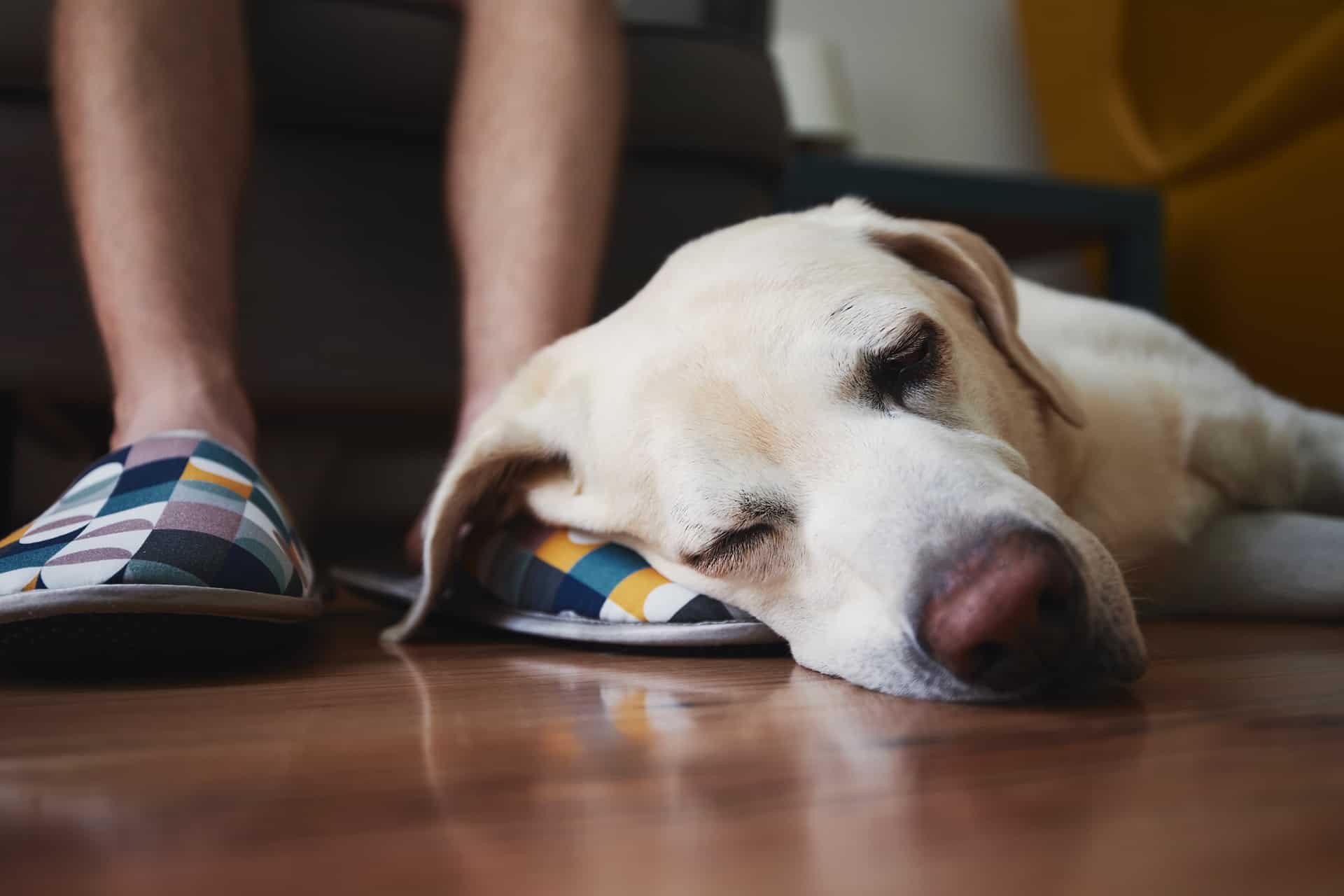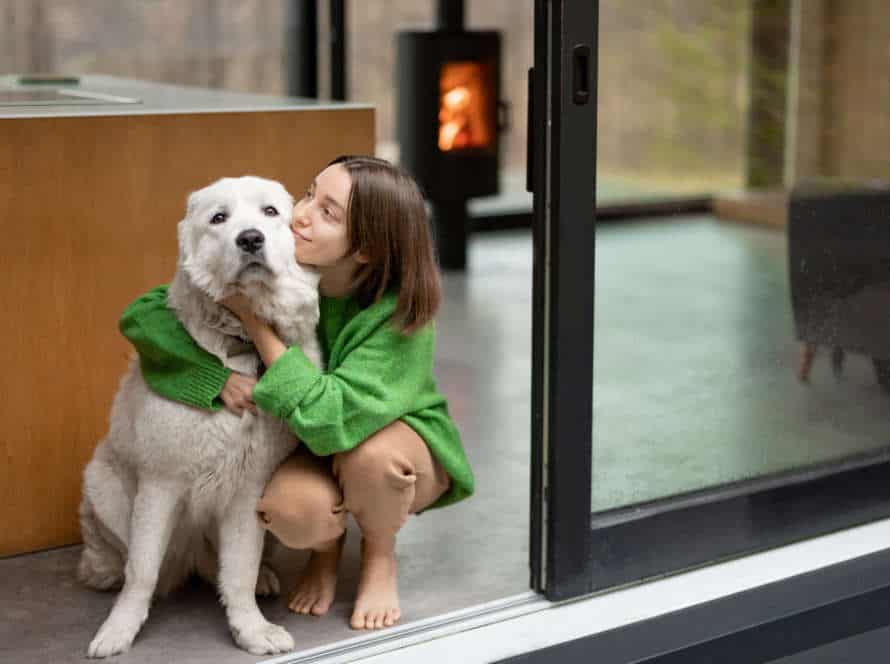Understanding Separation Anxiety
Separation anxiety is quite common amongst young ones. It starts with babies and continues to older children and even adults in certain situations. It can show in many ways. It’s crucial to understand its causes and how to manage it.
Let’s explore how age affects separation anxiety.
The Causes of Separation Anxiety
Separation anxiety is a huge problem for pets. It can cause destructive behavior, excessive barking and howling, and even health problems. Here are some common causes:
- Lack of socialization. Pets who weren’t socialized enough as puppies or kittens can have anxiety.
- Change of routine. A sudden change to your pet’s life can make them anxious.
- Fear of abandonment. Pets that were abandoned or lost their owners may have issues.
- Medical issues. Some pets may develop anxiety due to an underlying medical condition.
It’s important to remember that separation anxiety is treatable. With proper training, routine, and socialization, pets can manage their anxiety and lead happy, healthy lives.
Symptoms of Separation Anxiety
Separation anxiety is an issue that both children and adults have. Its intensity differs from person to person.
Here are some regular signs of it:
In Children:
- Tears, yells or tantrums when away from their guardian or home.
- Not wanting to go to school.
- Clinging to those they love.
- Nightmares and problems sleeping alone.
In Adults:
- Being afraid to be on their own or away from loved ones.
- Fear of being left behind or rejected.
- Overthinking future possibilities.
- Difficulties making choices without a loved one’s input.
Age may influence separation anxiety, yet it won’t go away without help. Seeing a therapist and mastering coping strategies can help in controlling and getting over separation anxiety.
Types of Separation Anxiety Disorders
Separation anxiety disorder is an excessive fear or worry about being apart from those that are loved, or familiar environments. There are three types of this disorder:
- Early Onset: It usually starts in childhood, as early as 6-7 months.
- Late Onset: This type usually appears in adolescence or adulthood, often due to a significant life change or event.
- Situational: It’s triggered by certain situations, such as leaving the house, traveling, or being away from family.
If it’s not treated, the disorder can worsen and have a negative effect on one’s life, relationships, and mental health. Professional help can make a huge difference in managing and treating separation anxiety disorder.
Separation Anxiety in Different Age Groups
Do adults suffer from separation anxiety too? Is it different for different age groups? In this article, we’ll find out. We will examine how separation anxiety is experienced at different ages, and how it changes over time.
Separation Anxiety in Infants
Separation anxiety is a normal part of a child’s growth. It can affect babies of different ages differently. Older infants understand object permanence better, so it’s more challenging. As they get older, children learn how to deal with it better, leading to less symptoms.
Here are some tips to ease it:
- Do short separations to get baby used to it.
- Make a goodbye routine that baby can count on and associate with your return.
- Give calming items like blankets or stuffed animals for them to hold onto when you’re not there.
Remember that this is a normal stage and it will get better as baby grows.
Separation Anxiety in Toddlers
Separation anxiety is common in toddlers. It’s usually more intense between 8 months to 3 years. Younger children don’t understand time, and thus, may experience more anxiety. Elder kids have learned coping techniques, like self-soothing, distractions, and logic.
The good news is, with time, the anxiety reduces. Be patient and reassuring when you go. Avoid abrupt goodbyes, keep up with routines, and give a comfort object.
Pro tip: Create a goodbye ritual to help your toddler tackle separation anxiety. Say a phrase like ‘Bye, I love you, I will miss you. See you when I get back’ to help them understand separation.
Separation Anxiety in School-Age Children
Separation anxiety in school-age kids is a common, natural reaction to the fear of being away from their loved ones. It’s normal for 4-6 year olds to feel this. But it can continue beyond this age range and affect different ages.
Research shows it’s most common in 7-9 year olds. As they grow older, it usually fades away. Adolescents and adults might still feel it in certain situations, mostly related to life events.
It’s important to provide a secure, supportive environment for kids with separation anxiety, no matter their age. Parents can help by setting up routines, making a consistent goodbye ritual and teaching relaxation techniques like deep breathing or meditation.
Pro Tip: Encourage your child to express their feelings. Reassure them that you’ll come back. Listen and acknowledge their emotions so they feel understood and supported.
Separation Anxiety in Adolescents
Separation anxiety is common in adolescents, especially those aged 12-18. It can be quite tough for them. But it does improve with time.
Children aged 7-9 tend to experience it more, as they become more aware of the world’s dangers. Adolescents also face it when starting high school/college, moving to a new house, or dealing with loss.
Separation anxiety can be very hard, but it does get better as the young person learns how to handle their emotions and new situations.
If you’re an adolescent who is going through it, you’re not alone! It’s all part of growing up.
Pro tip: Consult a mental health professional for help. They can give you the right support and techniques to cope with separation anxiety.
Coping Strategies for Separation Anxiety
Separation anxiety is an ordinary and beneficial stage of growth in youngsters. Yet, it can remain a test during teenage years and even adulthood. To manage these challenges, there are ways to cope. In this article, we’ll examine different stages of life and how to handle the results of this anxiety.
For Infants and Toddlers
Separation anxiety is common in infants & toddlers. But, there are strategies to help make it easier. Here are some tips:
- Practice regular separations. Encourage your child to spend time away with a trusted caregiver or family member.
- Stick to a consistent routine. This helps your child feel secure.
- Provide comfort items. Give them a special toy, blanket or object that brings them comfort.
- Be positive. Remain calm and reassuring when saying goodbye. Give them hugs and kisses.
Separation anxiety usually improves over time. As they grow, they develop independence & trust.
Pro Tip: Stay positive & reassuring. Be patient as they adapt to new situations.
For School-Age Children and Adolescents
Separation anxiety is common among children and adolescents. It’s a tough experience for both kids and parents. But, there are ways to cope with it in different age groups.
For school-age children, coping strategies include:
- Reassuring them they’ll be safe and you’ll come back.
- Creating a special goodbye ritual like a handshake or wave.
- Therapy to learn relaxation techniques and cognitive-behavioural strategies.
Adolescents benefit from:
- Gradually increasing time away from home.
- Fostering independence by making their own decisions.
- Encouraging communication about anxieties.
Good news: Separation anxiety usually fades as children and teens mature and become more comfortable with independence.
For Adults with Separation Anxiety Disorder
Separation Anxiety Disorder can be as overwhelming for adults as it is for children. But with the correct coping strategies, it’s possible to manage symptoms and enhance your quality of life.
Here are a few techniques that may be useful:
- Cognitive-Behavioral Therapy: This type of therapy can help reframe negative thoughts and beliefs about separation, build skills to cope and handle anxiety symptoms.
- Relaxation Techniques: Deep breathing, meditation, muscle relaxation or yoga can help reduce anxiety during times of separation.
- Exposure Therapy: Gradually exposing yourself to situations that cause separation, like being away from your loved ones, can help desensitize over time.
Seeking professional help and support from family and friends is a great way to manage Separation Anxiety Disorder. Treatment requires time and patience, but with the right tools and support, recovery is achievable.
Seeking Professional Help for Separation Anxiety
Separation anxiety can be a tough struggle for many households. It could be due to a past experience, a distressing incident, or something else. It can be too much for the entire family. The good news is, there are experts who can assist. Seeking aid from a professional is a necessary step when tackling separation anxiety. Let’s look at the choices for obtaining professional support.
When to Seek Professional Help
Separation anxiety is a common thing for both kids and adults. If the signs don’t go away, it’s important to get help.
Here are signs to look out for:
- Severe worry and panic when apart from a loved one, even for a bit.
- Social situations, work, and school are avoided to be close to someone.
- Struggling to sleep or nightmares due to fear of being away.
- The anxiety doesn’t go away and affects relationships, social life, and routines.
For children, this can go away by age 4. But if not, help is needed for the best development and joy.
Types of Therapy for Separation Anxiety Disorder
If you or someone you know has separation anxiety disorder, seeking professional help is the best way to manage and overcome it. Different therapies and treatments are available, tailored to the individual’s needs and preferences.
CBT is often used – it changes thought patterns and behaviors with exercises and strategies. Exposure therapy helps by gradually facing the source of fear in a secure place. Play therapy for children uses play to express and address anxieties. Family therapy improves communication and relationships between family members.
Note that although time may help, it’s still recommended to get professional help, especially if symptoms are long-term and affect daily life.
Medications for Separation Anxiety Disorder
Separation Anxiety Disorder is often treated with a combination of therapy and medicine. Here are some medicines that are often prescribed:
Antidepressants: This can be effective as Separation Anxiety Disorder might be caused by a serotonin imbalance in the brain. Antidepressants work by balancing these levels and reducing anxiety symptoms.
Benzodiazepines: These are anti-anxiety medicines that can give quick relief from symptoms. Though, they are addictive and must only be taken with a doctor’s help.
Beta Blockers: Beta blockers help with the physical symptoms of anxiety, like a fast heartbeat or sweating. They are usually used with other medicines.
It’s important to talk to a mental health expert to decide the best treatment. Also, while medication may help, it should be used with therapy for the best effects.
Impact of Time on Separation Anxiety
Age is influential in a child’s development. Parents of young kids may find themselves facing the problem of separation anxiety. Their child behaves anxiously or fearfully when apart. Does this issue improve with time? Let’s look into the effect of time on separation anxiety further.
Short-term vs. Long-term Separation Anxiety
Separation anxiety is a common issue for animals. It differs in intensity depending on things like age, breed, and past events. Young puppies often only have short-term anxiety, which can be overcome with training. Long-term separation anxiety can be a persistent problem, with causes such as health issues, environmental changes, or life changes.
It can be very distressing for a pet, resulting in bad behavior, barking, and physical health problems. Speak to a vet for help managing it. Tip: Exercise, socializing, and gradually increasing time away can help reduce anxiety.
Does Separation Anxiety Get Better with Time?
Separation anxiety in dogs can be improved, given the proper steps. The rate and timeline of improvement depend on a few things. Age, severity, and how effective the training is.
Puppies more likely than older dogs to have anxiety. With proper training, most can overcome it by 6 months.
Older dogs may take longer to break the habit. Severity and consistency will affect progress.
With the right training, young and old dogs can cope with separation anxiety. A consistent routine and positive associations during alone time are essential. Dedication and patience are key for success.
Factors That Influence the Outcome of Separation Anxiety Over Time.
Separation anxiety is normal in both children and adults. Age and time can affect how it changes over time. In children, separation anxiety usually peaks at 18-24 months. As a child gets older, they can handle being away from their caregiver better due to better coping skills.
For adults, how separation anxiety changes over time depends on how severe the anxiety is, what causes it, and if they seek help. With the right treatment and support system, most adults can learn to manage it.
It’s important to note that separation anxiety is treatable. Seeking help from a mental health professional is the first step to finding relief.
Frequently Asked Questions
Q: What is separation anxiety?
A: Separation anxiety is when an individual experiences fear or distress when separated from a person or place they are attached to.
Q: Does separation anxiety increase with age?
A: In some cases, separation anxiety can increase with age, particularly for those who have experienced traumatic separations or losses.
Q: Can separation anxiety improve over time?
A: Yes, separation anxiety can improve over time with proper treatment and support.
Q: What are some common symptoms of separation anxiety?
A: Common symptoms of separation anxiety include feeling anxious or panicked when separated from a loved one or familiar place, physical symptoms such as headaches or stomachaches, and avoidance of separation.
Q: What are some effective treatments for separation anxiety?
A: Effective treatments for separation anxiety include cognitive behavioral therapy, relaxation techniques, and medication in some cases.
Q: Is it common for adults to experience separation anxiety?
A: Yes, adults can experience separation anxiety, particularly in response to significant life changes such as a move or the loss of a loved one.







